Rites and social practices
The young saint
The cult of Saint Gabriel in Isola del Gran Sasso
Having moved from Assisi to the Gran Sasso mountain, when he took his vows into the Passionist Congregation Francesco Possenti changed his name into Gabriel of Our Lady of Sorrows, the figure to whom he had been completely devoted since childhood. He lived to achieve unity with the Passion of Christ and the suffering of Maria; he died particularly young, thus becoming the patron saint of young people. As the feast date approaches, thousands of pilgrims set out on their way with all means of transport; many of them walk through the night until they reach the gates of the sanctuary.
“In a small room close to the church of the convent, we sang in honour of Brother Gabriel. When we had stopped singing and I was on my way home, as I stood in front of the village church I realized that I could stand without support so I threw away my walking stick. The next day I took the walking stick and I put it next to the tomb of the servant of God, Gabriel”.
Rosalina Di Giulio, June 1893
In Isola del Gran Sasso, a town located in the so-called Sicilian Valley at 415 metres of altitude, at the foot of the Gran Sasso mountain, stands the double sanctuary of St Gabriel of Our Lady of Sorrows, near the thirteenth-century Franciscan convent that became the headquarters of the Passionists in 1847. The first sanctuary was built in 1908 on the occasion of the beatification decreed by Pius X, and the second one was built in 1970 to accommodate the huge influx of worshippers, especially on the occasions that celebrate the saint during the year.
The liturgical feast is celebrated every year on 27th February, the date of the death of the young saint, which occurred in the convent at dawn on February 27th 1862, at the age of only twenty-four, caused by the bone tuberculosis he had suffered from in the last two years of his life.
Francesco Possenti was born in 1838 in Assisi, the eleventh of thirteen children who soon lost their mother. He then moved with his family to Spoleto, where his religious vocation matured, and in 1856 he took the decision to enter into the Congregation of the Passionists at Morrovalle (MC) with the name Gabriel of Our Lady of Sorrows. From 1859 to his death he lived at the convent of Isola del Gran Sasso, where the last room stayed in , known as the “bedroom of transit” is still preserved.
He was canonized by Pope Benedict XV in 1920 and declared patron saint of the Italian Catholic Youth by Pope Pius XI in 1926 and patron saint of the Abruzzo region by Pope John XXIII in 1959. The first miraculous events that determined his sanctity date back to the exhumation of his body in October 1892 and over the course of the decades there have been many other manifestations of holiness.
The communities living around the Gran Sasso mountain, from the nearest to those more distant, close to the coast, have always reached the sanctuary on foot, walking along paths and minor roads, through woodlands and meadows, mostly at night, in a spontaneous and solitary way or in a larger and structured group while from the neighbouring regions of Marche and Molise, but also from Puglia and perhaps Calabria and other regions of central Italy, the pilgrimages take on a more organized form , through the rental of a coach or the use of a car.
In 1962, during her research on the “festivities of the poor”, the anthropologist Annabella Rossi observed a significant influx of about 700,000 pilgrims; this evidence put the Sanctuary of St Gabriel among the most important in Italy in terms of devotional participation. Currently, in addition to the day of the liturgical feast, the pilgrims arrive in mass on the second Saturday in July, the feast of the pilgrim, and the last Sunday in August, on the occasion of the popular feast of the saint, characterised by a tent city and the festival dedicated to young people.
A repertoire of pilgrim songs has always accompanied the long journeys made to the saint’s burial place by the devotees, gathered together in companies with a significant number of people. These songs drew in part from the repertoire of prayers, and they were performed in monodic or polyvocal form depending on the circumstances, on the people present, and the type of singing. They were collected in prayer booklets or released on vinyl and later on cassette tapes which circulated among the faithful and became a further instrument for the revival of interest in the history of the life of the saint and the particular events of the best-known and less familiar miracles but also for the sharing of a devotional feeling that united large group of believers.
The pilgrimage journey to St Gabriel’s Sanctuary represents a very important opportunity for spiritual growth and it is similar to other cults of the Apennines characterised by the same model of access to the liminal dimension for an extraordinary and limited period, when miraculous events and strongly ritualized behaviour may emerge. Also thanks to the help given to her in the field by the parish priest and ethnographer, Don Nicola Jobbi, in 1968 Annabella Rossi gathered accurate information, noting particular habits such as “walking barefoot, walking on one’s knees, surrendering oneself to hysterical behaviour (rare), walking around the sanctuary three times, spending the night inside the sanctuary, touching the stones, walking backwards”.
In line with the devotional practices also attested in other shrines, a particular healing power was attributed to the dust present in the tomb where St Gabriel remained for thirty years (1862-1892) which was collected and sold to the faithful along with a healing oil in little glass bottles. Annabella Rossi also testifies to the presence of votive objects such as ex-votos in silver plate, depicting human figures and parts of the body, or orthopaedic equipment left as votive offerings ; her list, however, does not include the little painted wooden tablets now present in great numbers among the ex-votos in the sanctuary, or the photographs, also used to plead for intercession or to express thanks for grace received from the miraculous saint of the Gran Sasso, the young patron of youth.
Stabat Mater
Isola del Gran Sasso (TE), June 21, 2014.
Recording by Stephen Saverioni,
Don Nicola Jobbi/Bambun Study Centre Archive.
Listen to the track

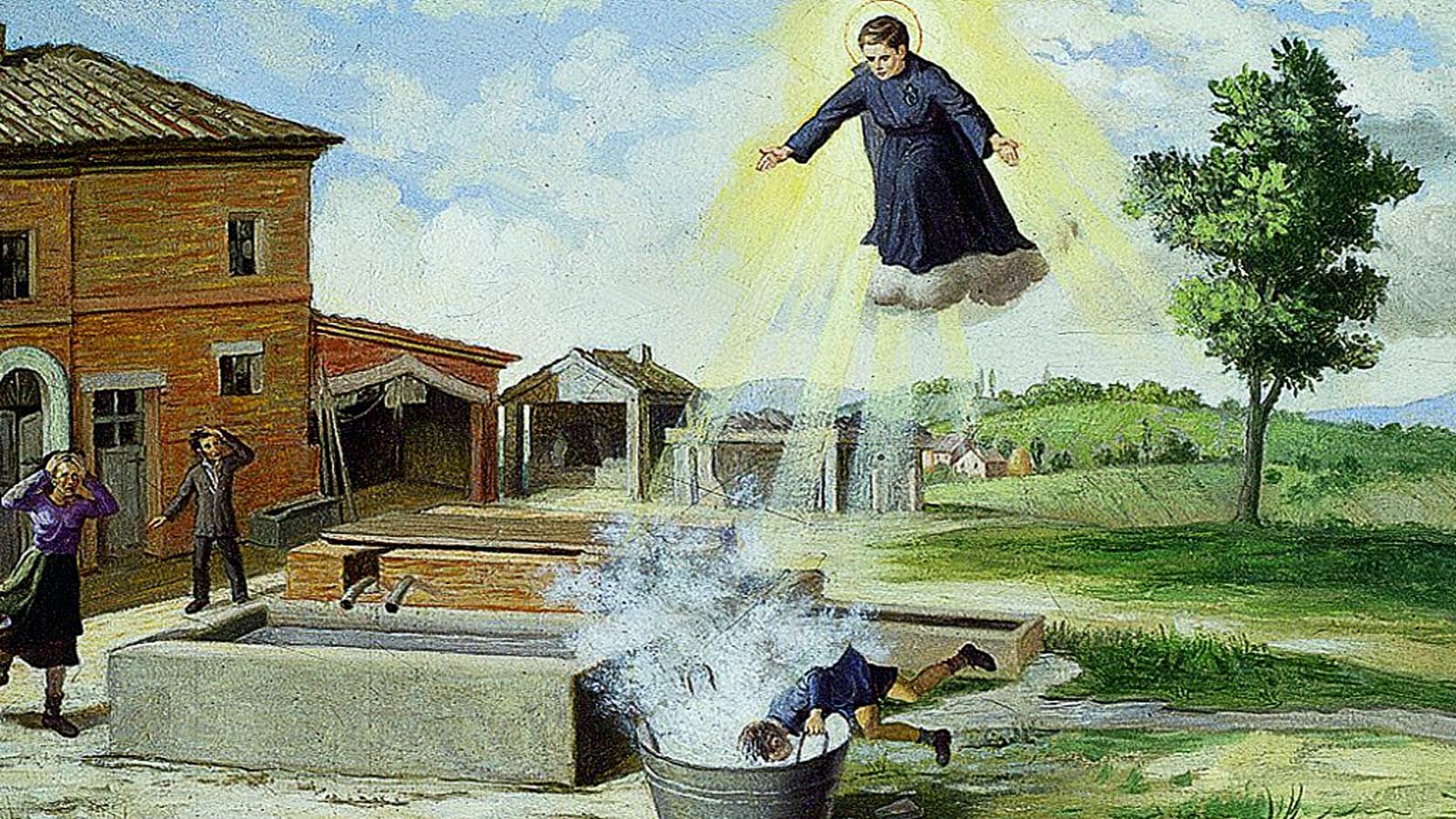
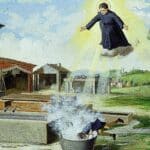
The young saint
Painting of a miracle
Photo from the Museum of Ex-votos and the Iconography of the Saint,
Isola del Gran Sasso (TE), 2010,
Historical Archives of the Sanctuary of St Gabriel of Our Lady of Sorrows.
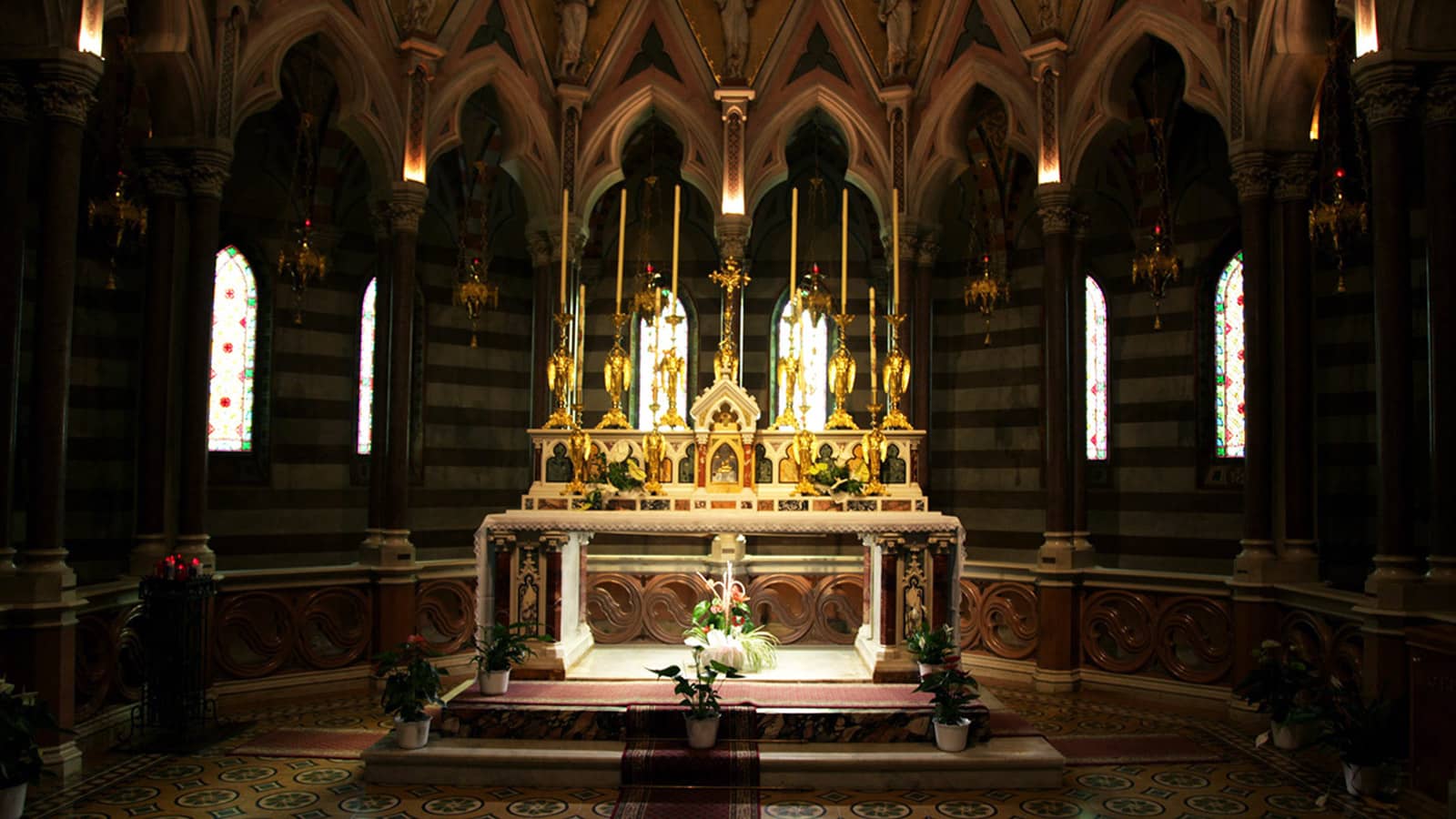
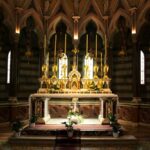
The young saint
Ancient chapel
Photo by Stefano Saverioni,
Isola del Gran Sasso (TE), May 21, 2014,
Don Nicola Jobbi/Bambun Study Centre Archive.


The young saint
The urn of St Gabriel
Photo by Stefano Saverioni,
Isola del Gran Sasso (TE), May 21, 2014,
Don Nicola Jobbi/Bambun Study Centre Archive.
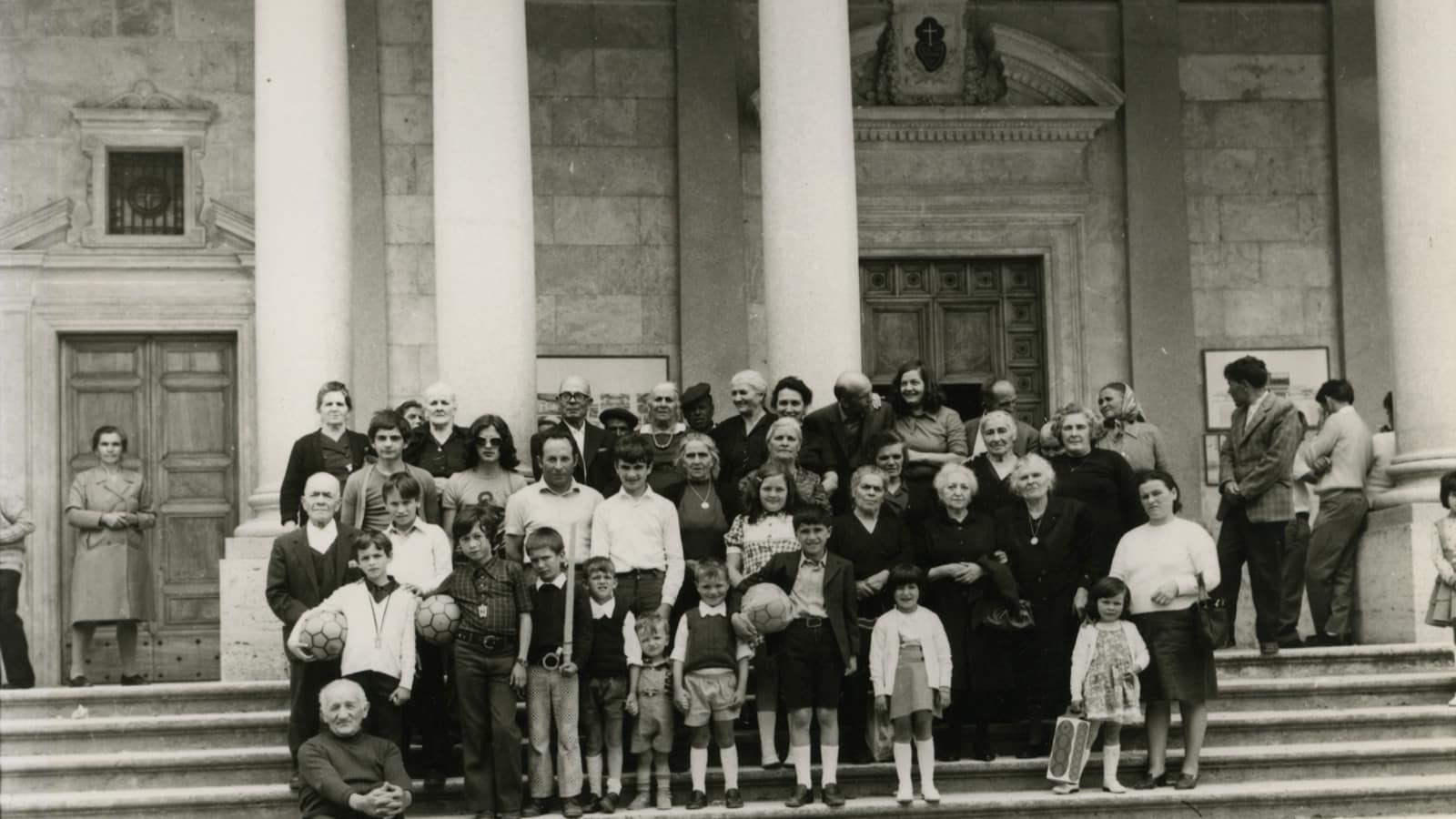

The young saint
Pilgrimage
Photo by Don Nicola Jobbi,
Isola del Gran Sasso (TE), late 1960s,
Don Nicola Jobbi/Bambun Study Centre Archive.
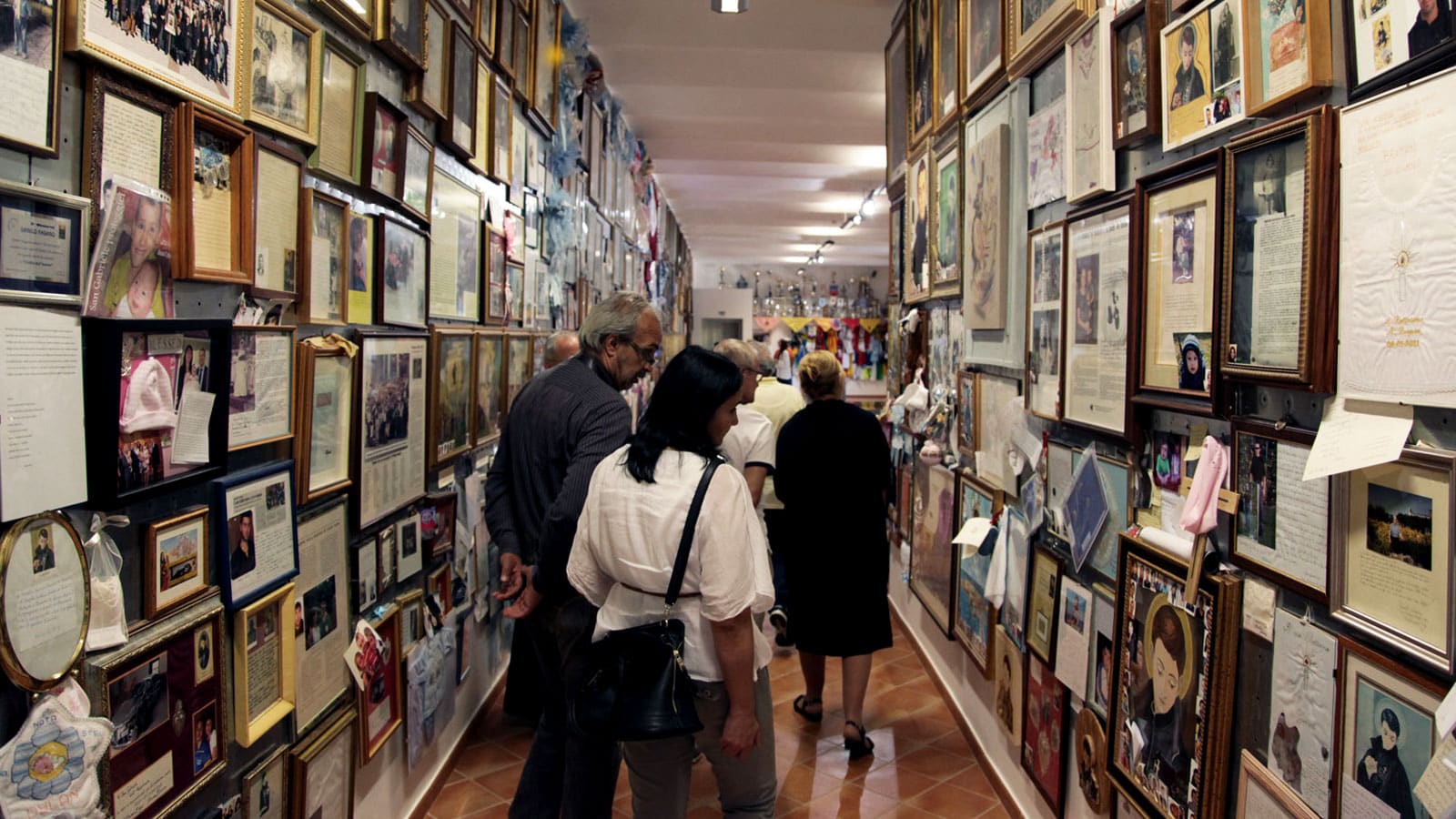

The young saint
Ex-votos
Photo by Stefano Saverioni,
Isola del Gran Sasso (TE), May 21, 2014,
Don Nicola Jobbi/Bambun Study Centre Archive.
Watch the video
A praying nun
Isola del Gran Sasso (TE), June 21, 2014.Filming by Stefano Saverioni, Don Nicola Jobbi/Bambun Study Centre Archive.
Cultural transmission and protection
The cult of St Gabriel of Our Lady of Sorrows has been growing ever more popular over a wider and wider area since the end of the nineteenth century when the first miraculous events inspired the birth of the devotion and at the same time its institutionalization.
The practice of foot pilgrimages appears to be greatly reduced compared to the past but the overall number of pilgrims visiting the shrine has increased noticeably, so as to make it necessary to build a new place of worship to accommodate the large numbers of visitors. In fact, the modern sanctuary, dating back to 1970, can contain about six thousand people and is able to accommodate more than ten thousand pilgrims per day. However, in the course of 2017, a significant number of believers travelled to the shrine on foot: almost two thousand from Teramo, and about a thousand from the towns and villages in the Teramo, Pescara and Aquila areas.
It is estimated that the sanctuary of St Gabriel of Our Lady of Sorrows currently welcomes about two and a half million devotees a year, ranking among the first eight places of worship in Italy and among the fifteen most visited shrines in the world. A whole complex of buildings has therefore been developed to provide a series of neighbouring spaces for worship, study, and exhibition , such as the Museum of Ex-votos and of the Iconography of the Saint, the Museum of Contemporary Religious Art on the Passion of Christ, the permanent exhibition on the Shroud of Turin, the missionary exhibition on the life and work of the Passionists in the world, the Library and Historical Archive, and the head office of the “Eco di San Gabriele” (Echo of St Gabriel), a monthly magazine linked to the work of the sanctuary, which has carried out important work of propagation since 1911, the year of its foundation.
Numerous studies have been dedicated to the cult of St Gabriel, each with a distinct focus and purpose, and based on different disciplinary approaches, from history to anthropology and the study of popular traditions, from the history of religions to devotional biography, from iconography to the conservation of the writings of the saint: it is worth mentioning, among others, the research and publications of Franco D’Anastasio, Gabriele Di Cesare, Giovanni Di Giannatale, Vincenzo Fabri, Gabriella Marucci, Annabella Rossi, Fernando Pielagos, Bernardino Ceci, Natale Cavatassi, Fabiano Giorgini and Paolo Zecca.
The ethnomusicological research carried out in the field between the early 1960s and the second half of the 1990s in particular by Carlo Di Silvestre, Marco Magistrali, Domenico Di Virgilio, Don Nicola Jobbi and Giuseppe Profeta is especially important for the understanding of ritual practices and repertoires of devotion, as they collected and recorded the prayers and songs dedicated to the saint and widely attested in the rural areas of central and northern Abruzzo.
The official website of the sanctuary (http://www.sangabriele.org/) raises awareness about everything that today rotates around the cult of St Gabriel of Our Lady of Sorrows and it contains useful news, insights, life stories, biographical notes, photographs and an updated calendar of events.

